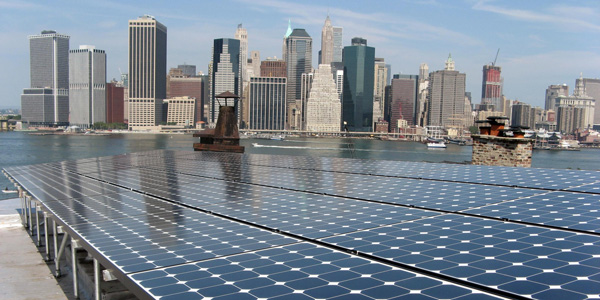A recent survey of registered entities suggests the penetration of distributed energy resources such as rooftop solar installations and residential storage technology is growing, but more work is needed to ensure these facilities are properly accounted for in system modeling.
Speaking to NERC’s System Planning Impacts from Distributed Energy Resources (SPIDER) Working Group this week, Irina Green — a senior adviser for regional transmission at CAISO and co-lead of the SPIDER Modeling Subgroup — said the survey is intended to deliver a “high level” view of utilities’ approach to DER modeling. The survey was sent to 63 entities in December 2019; as of the Feb. 7 deadline, 44 had responded.
While this was a lower level of participation than the subgroup had hoped for, the team still felt the responses provided a useful cross-section, with many geographical regions and industry sectors represented. With respondents permitted to select multiple functions, participants included:
- balancing authorities (20);
- reliability coordinators (10);
- planning coordinators (21);
- transmission operators (34);
- transmission owners (32);
- transmission planners (35);
- resource planners (26);
- distribution operators (27); and
- distribution providers (31).
“Some answered everything; some skipped some questions. But still, we got enough to be able to judge … what’s going on with DER modeling,” Green said.
DERs Set to Expand
Questions on the survey involved topics such as minimum and peak gross load in respondents’ service areas; technologies included in their definition of DER (such as solar PV, wind, battery storage, etc.); the share of DERs in gross load; and how they are modeled in load flow studies. Both retail and utility-scale DERs were addressed in the survey.
Green cautioned against drawing substantive conclusions from the preliminary results, but she did point to some patterns in responses that the team found worth noting. While a majority of entities indicated they plan to expand the penetration of DERs on their system over the next five years, most reported they still do not incorporate DERs in their modeling, citing various reasons such as lack of data or tools or a belief that the impact of DERs is too small to account for.
Modeling subgroup members also suspect there is a higher occurrence of DERs tripping offline than entities are aware of; 17 of 27 respondents reported observing shifting peak or light hours of net load in their system because of increasing DER penetration levels, but only five said they had observed widespread tripping of DERs because of faults in operations. While it is too early to say for sure, Green said the fact that many of the same respondents said they lacked data to model DER behavior suggested that “the DER may have tripped, but the entity may not know that.”
DER Prediction Harder than Expected
The ability of utilities to predict the output of DERs, particularly in residential applications, is a topic of growing concern for the SPIDER group. Earlier this year, Thomas Bialek, the chief engineer for San Diego Gas & Electric, told the group that the behavior of SDG&E customers with rooftop PV systems is very different than system planners had expected. (See Rooftop PV’s ‘Hidden Loads’ Challenge Grid Planners.) Bialek also observed that such behind-the-meter services may be more vulnerable to cyberattacks than equipment that is directly controlled by utilities.
The modeling subgroup plans to continue reviewing responses and develop further studies to inform an eventual white paper. While the SPIDER leadership had originally intended to follow up this survey with another general questionnaire focused on specific modeling approaches, the revelation that most entities are not modeling DERs has led to suggestions that these plans be modified into a more targeted approach.
“I think we’ll have to re-evaluate that now based on some of [these] findings. … Do we want to do a separate survey when … we know what the answer will be?” said Ryan Quint, NERC’s lead engineer for advanced system analytics and modeling. “Maybe we can rethink that and … simply reach out to the folks that are modeling DERs and do some follow-up questions regarding studies. I think that’s a discussion that the modeling group will have here soon.”




